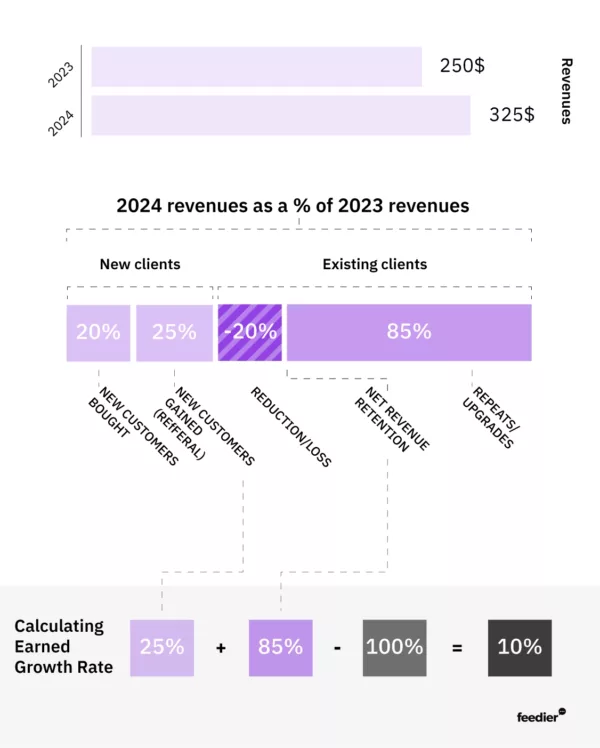NPS 3.0: A customer-centric vision
Created in 2003 by Fred Reichheld in his article “The One Number You Need to Grow“, published in the prestigious Harvard Business Review, the Net Promoter Score (NPS) celebrated its 20th birthday last year.
Today, NPS is an indicator followed by almost all companies in Europe, helping all management to have a vision that focuses on customer needs. However, despite the popularity of the best-known recommendation question, NPS, the last 10 years have shown both the success and the failure of this indicator.
Fred Reichheld wrote 3 books in recent years to provide critical feedback on the indicator that he himself created, as well as to identify company practices with this indicator. This article focuses on his latest book, “Winning on Purpose“ , published in 2021. It’s not a summary, but a list of best practices drawn from the book’s Net Promoter Score lessons and other sources. We highly recommend reading this book to develop your own point of view.
In this article, we’ll look at these different points :
- Why NPS is always an indicator to prioritize ?
- What are the risks of Net Promoter Score systems ?
- NPS 3.0, a new framework better adapted to our society
Why NPS is always an indicator to priorize?
According to Gartner in 2021, 75% of companies will give up NPS between now and 2025.
Three years later, in 2024, we can clearly say that NPS is not ready to disappear, for two main reasons.
Reason no. 1: NPS is an indicator in relation to the challenges of our society
Behind these notions of promoters, detractors, or customer loyalty lies the essential subject of the purpose of the company in society and the value it brings to it’s customer. It’s no coincidence that Siemens, the German industrial giant, incorporates the NPS into it’s ESG (environmental, social, and governance criteria) indicators.
With Promoters, we find the individuals (not just customers) whose lives have been enhanced by the company’s service or product. In his book, Fred Reichheld demonstrates the connection between NPS and the “Golden Rule“, or “Treat others as you would like to be treated,” and how NPS measures the benefits of the company on it’s customers’ lives.
“The main mission of any organization striving for excellence should be to build a community whose primary goal is to enrich customers’ lives in a sustainable way, and where all members are treated in accordance with (and held accountable to) the Golden Rule.“
Winning On Purpose, Fred Reichheld.
Companies with a high NPS all have one thing in common: prioritizing the customer experience over profits, and therefore answering their mission (“purpose”). This ultimately leads to better customer loyalty and therefore higher profits (see part 2). For these companies, profit is never the primary goal but rather the consequence of a positive impact on customers’ lives. Within the company, the Net Promoter Score also serves as a motivation engine for employees. They find meaning in their work through the value they provide to customers. Fred Reichheld even speaks of a Net Purpose Score, to replace the meaning of the Net Promoter Score.
Let’s delve a little deeper with the notion of Customer Capitalist versus Financial Capitalism. There is no effective transformation of or in our society, without a transformation of companies (and therefore of their products and services). What’s more, there can be no transformation of companies without competitiveness within the customer experience.
We could illustrate numerous examples, such as delivery times (Amazon Prime versus more eco-friendly but slower deliveries), the availability of transportation options (Uber versus traditional taxis), and the impact of prices in retail, among others. Companies or organizations with a low or negative NPS, unable to adapt, are destined to disappear in the long term.
It’s therefore crucial to match changes (new products/services) with the impact on the customer’s life via NPS, in order to maintain a strong competitive edge in the short term, which in turn accelerates transformations over the long term.
We could compare the NPS to a GPS. It helps locate where the company stands, it’s impact on it’s customers, and it’s ability to enrich their lives.
Reason no 2 : The NPS has a financial impact that is beyond dispute.
External impact with value for investors.
What is the long-term financial impact on a company with a competitive NPS score? To find out, let’s look at the American stock market (which is unfortunately more advanced on the subject than in Europe) to observe the value created for investors over the long term, and compare the NPS leaders with other companies in the same category. This is what the consulting firm Bain has done in an exhaustive way which Fred explains in his book “Winning On Purpose”.
Not only are companies that prioritize the customer with a competitive NPS more innovative and attractive, they also deliver on average 5.1 times more value to investors (TSR) than other companies in the market (over a 10-year analysis window). The most extreme examples include Tesla, Amazon, Apple, Starbucks, and all companies with an NPS exceeding 80. But upon closer examination, most companies showing above-average growth in their sector are those capable of rapid transformation, reflected in their NPS, which demonstrates their impact on their customers’ lives.
Internal impact with the Earned Growth Rate.
Behind this value for investors or TSR (Total Shareholder Return) lies a rather straightforward mechanism to understand, which links high NPS scores, healthy growth, and the final value for investors.
It’s the concept of Earned Growth Rate, which aims not to limit the notion of growth simply in terms of revenue but to differentiate between “Bought Growth” and “Earned Growth.”
Bought Growth refers to growth stemming from paid acquisition (marketing/advertising/sales outreach). In contrast, Earned Growth comes from recommendations by existing customers to other prospects.
How to calculate the Earned Growth Rate?
Earned Growth Rate = (A) Earned Growth Rate + (B) Net Retention Rate – 100%
- (A) Earned Growth Rate (ENC – “Earned New Customers”). This is the percentage of revenue from new customers you’ve gained through recommendations (as opposed to those acquired via promotional channels). This component will require a little more effort, as companies need to determine the reason why new customers have joined them. Concretely, this is a question asked of customers when they register to find out the source of their registration.
- (B) Net Retention Rate (NRR). You simply count the active year’s revenues from customers who were already active last year, divide this amount by last year’s total revenues, and then express this figure as a percentage. If there are detractors, the NRR will be less than 100%. If there are more promoters, they will invest again and the NRR will be higher than 100%. Although it may seem complicated, most modern CRMs allow you to calculate the NRR.

A competitive NPS, and ultimately the Earned Growth Rate, have a dual impact on financial performance:
- Increase the proportion of customers who come from recommendations by other customers (with zero acquisition cost).
- Maximizing retention rate means having a loyal customer base whose value increases over time.
What are the risks of Net Promoter Score systems?
The NPS has many advantages, but not only that. Indeed, it is widely adopted by large companies (with 70% of Fortune 1000 companies in the United States and the majority of CAC 40 companies in France), but there are many limitations that are often overlooked when implementing it in practice.
Limit n°1: NPS is difficult to compare between different companies.
With a similar question, a scale from 0 to 10, and a method of calculation that is also similar, one might think that NPS scores are all comparable to each other. Whether it’s companies in the same industry or within multiple products of the same company. However, with the diversification of NPS measures, this becomes inaccurate. We now have enough data and studies to prove that an NPS is comparable only if and only if:
- It’s measured at the same point in the customer journey (there’s a big difference in score between a post-purchase, post-delivery or post-support NPS).
- It’s measured on the same type of product or service within the same company or industry.
- It’s measured with an identical question, in the first question, with no conditional questions beforehand.
- It is asked in a similar way (giving rewards, or giving a strong incentive to a customer, because a commission is dependent on the score, skews comparisons).
Furthermore, it is important to note that most NPS measurements are conducted internally, which is not necessarily a bad thing, as this data is strategic. However, one should be cautious about comparing it to that of competitors. By being aware of the aforementioned factors, the NPS is more easily comparable internally when measurements are conducted consistently and originate from the same source.
Limit n°2: Linking the commission system to NPS scores is a risky practice
Linking a bonus or commission system to NPS scores poses the primary problem of “perverting” the relevance of the results. However, as illustrated in the first part of this article, a competitive NPS already has unparalleled economic returns and ROI. Therefore, there is no need to link it to commissions. If it is unavoidable, at the very least, bonuses should be linked to the team’s NPS rather than the individual facing the customer.
Here are a few examples of abuses observed in French companies related to NPS when a commission system comes into play:
- Change the meaning of the scores (with colors, for example) to make the customer understand that a score below 9 is bad. This is totally false and does not represent the meaning of NPS.
- Deceiving the customer about the impact of the score. For example, an agent from a French internet provider mentions to the customer after installation that the activation of the connection will only occur after answering the survey with a score above 8…
- Responding to the survey directly with the customer, explaining that a score below 9 will not be considered.
These examples, all from major French companies, illustrate the potential abuses of this indicator. However, the issue lies not with the agent or the customer but with the system put in place.
Limit n°3 : The NPS is often unnecessarily complicated.
As explained by the creator of the NPS, the idea behind the Net Promoter Score is also to replace long, boring surveys that no longer interest anyone in 2024. The “pure” NPS survey consists of just two questions:
- How would you recommend our {product/service/company} to a friend or colleague? ( rate from 0 to 10)
- What is the reason for your rating? (open question)
In reality, there are always many more questions (10 on average). What’s one more question? And another, then another, to finally end up with 20 questions… To ensure that the NPS remains a reliable indicator, it is important to reduce the size and number of surveys to avoid the famous “survey fatigue” and ensure that surveys are quick and easy to complete in less than 30 seconds. The goal is to make feedback practice transactional rather than an annual ordeal.
The NPS 3.0: a new framework better suited to our society.
This framework is based on a set of prerequisites aimed at putting the customer at the center of decision-making and creating an organization that enriches the lives of its customers by making a positive impact.
Leadership: putting customer value at the heart of the company
Change must begin at the leadership level of the company; there is no effective transformation without awareness at the highest levels of the organization.
How to put it into practice?
- Customer value, in line with the company’s purpose, must be continuously measured (in the absence of an annual audit). This means measuring, on a weekly basis, the number of customers whose lives have been “improved” thanks to the company, via the NPS. No, it’s not that easy, silos have to be broken down, but putting the customer at the center of all decisions (recruitment, product/service design or operations) has inestimable long-term value.
- It is crucial to bring management closer to customers, and this can be accomplished in just 2 steps:
- On a monthly basis, by taking part in the resolution of customer problems.
- On a weekly basis, with a more global review of customer feedback, giving a clear and honest view of the value created or not for the customer.
- On the financial level, it’s about being able to quantify earned growth (thanks to promoters) and differentiate it from bought growth. This involves several actions at the CRM level to track the customer source and at the accounting level to monitor the revenue evolution of the same customer base over successive periods.
Teams : Giving meaning to your job
It’s impossible to enrich customers’ lives, turn frowns into smiles and advance the company’s mission without convinced and motivated operational teams.
How to put it into practice?
- Operational teams must have the necessary support to know that they will always be supported when they act to enrich the lives of customers. This also means having a system that rewards innovation and initiative within the teams.
- They must be recruited, trained, and structured to bring the most value possible to the customer. In concrete terms, this means that teams must be able to identify irritants, address local ones, and effectively escalate global ones. This is not possible without a strong feedback culture within the company.
- It also means aligning compensation plans with the value received by the customer (i.e. no corrupted NPS, as directly linked to individual bonuses).
- Many leading companies in customer experience go a step further by incorporating NPS scores (or at least the value created for the customer) into promotion decisions.
- At the team’s daily level, a simple practice to implement is a weekly team review of customer feedback. The feedback should be anonymized at the team level. It should also highlight both areas for improvement and those that are working well, to satisfy the customer.
Technology: Accelerate your transformations to unlock new growth drivers
Technology is not the foundation of transformation, but rather an acceleration vector. Once you’ve identified the right technological partner, there’s a method for improving the impact of customer feedback within the company.
How to put it into practice?
- Centralizing feedback and adopting a “real-time” frequency.
Prioritizing the customer is impossible without a centralized, real-time view of dissatisfaction, weak signals, and positive points. It’s necessary not to limit oneself to satisfaction surveys but to consider complaints or reviews as other sources of customer feedback that contribute to this vision. - Adding context to feedback.
Raw feedback data (NPS, rating, verbatim) is rarely effectively actionable in its current state.It’s important to transform it into actionable, easy-to-understand information, and this is where the enrichment or contextualization phase comes in. Enriching your feedback involves adding operational or business data (context) to the feedback related to the customer journey (CRM, ERP, etc.), with the aim of highlighting weak signals. -
Using AI (Artificial Intelligence) for data processing.
Artificial intelligence (particularly NLP and LLM) allows for a quicker identification of irritants and provides an initial step in analyzing them. That’s why it’s essential to collect verbatims following NPS questions; they provide the customer perspective and facilitate the processing of irritants.
In summary, the Net Promoter Score (NPS) remains a relevant and powerful tool for measuring and improving customer experience, despite the criticisms and challenges encountered in recent years. The adoption of innovative practices and alignment with ethical principles, such as those proposed by Fred Reichheld in his latest book, underline the importance of a customer-centric approach to ensure sustainable and significant growth. By placing customer well-being at the heart of their strategy, companies are not only fostering their financial development but also contributing to a positive transformation of society, in harmony with the expectations and needs of customers.
Few words about Feedier
Feedier is a platform that harnesses all your feedback and business data to improve your Customer Intelligence. If you’re interested in the NPS question and want to improve this metric for your business, we recommend exploring our website. If needed, you can schedule a platform demonstration with one of our team members by clicking here.
Author
Florian
Share
Did you enjoy our resource?
Additional resources




